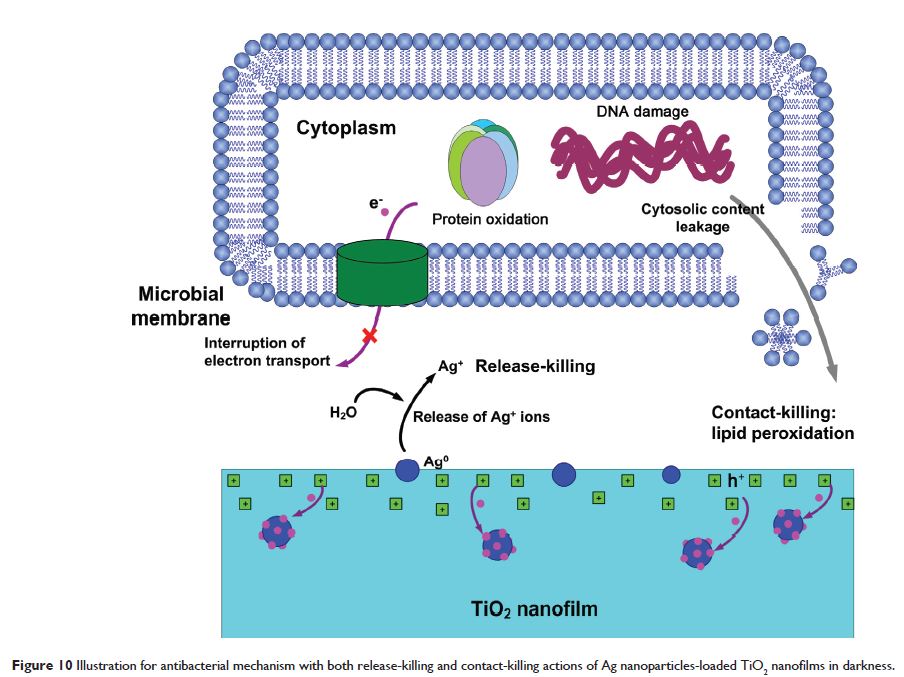108384
论文已发表
注册即可获取德孚的最新动态
IF 收录期刊
- 3.4 Breast Cancer (Dove Med Press)
- 3.2 Clin Epidemiol
- 2.6 Cancer Manag Res
- 2.9 Infect Drug Resist
- 3.7 Clin Interv Aging
- 5.1 Drug Des Dev Ther
- 3.1 Int J Chronic Obstr
- 6.6 Int J Nanomed
- 2.6 Int J Women's Health
- 2.9 Neuropsych Dis Treat
- 2.8 OncoTargets Ther
- 2.0 Patient Prefer Adher
- 2.2 Ther Clin Risk Manag
- 2.5 J Pain Res
- 3.0 Diabet Metab Synd Ob
- 3.2 Psychol Res Behav Ma
- 3.4 Nat Sci Sleep
- 1.8 Pharmgenomics Pers Med
- 2.0 Risk Manag Healthc Policy
- 4.1 J Inflamm Res
- 2.0 Int J Gen Med
- 3.4 J Hepatocell Carcinoma
- 3.0 J Asthma Allergy
- 2.2 Clin Cosmet Investig Dermatol
- 2.4 J Multidiscip Healthc

已发表论文
不同的纳米形 Ag-PIII TiO2 薄膜上银纳米粒子存在、释放与抗菌作用
Authors Li J, Qiao Y, Zhu H, Meng F, Liu X
Published Date July 2014 Volume 2014:9(1) Pages 3389—3402
DOI http://dx.doi.org/10.2147/IJN.S63807
Received 9 March 2014, Accepted 3 May 2014, Published 16 July 2014
Abstract: Nanotopographical TiO2 films (including nanorod, nanotip, and nanowire topographies) were successfully fabricated on the metallic Ti surface via hydrothermal treatment and then underwent Ag plasma immersion ion implantation to incorporate Ag with TiO2. The surface morphology, phase component, and chemical composition before and after Ag–PIII were characterized. In view of the potential clinical applications, both Gram-negative Escherichia coli and Gram-positive Staphylococcus aureus were used to estimate their antimicrobial effect. The nanostructured TiO2 films on a Ti surface exhibit a better bacteriostatic effect on both microbes compared to the pristine Ti. The nanotopographies of the TiO2 films affect the nucleation, growth, and distribution of Ag nanoparticles in the films during Ag–PIII process. The Ag nanoparticles are completely embedded into the nanorod film while partially exposed out of the nanotip and nanowire films, which account for the significant differences in the release behaviors of Ag ions in vitro. However, no significant difference exists in their antimicrobial activity against both microbes. The antimicrobial actions of the Ag@TiO2 system described here consist of two methods – the contact-killing action and the release-killing action. Nevertheless, based on the observed results, the contact-killing action should be regarded as the main method to destroy microbes for all the Ag plasma-modified TiO2 nanofilms. This study provides insight to optimize the surface design of Ti-based implants to acquire more effective antimicrobial surfaces to meet clinical applications.
Keywords: silver, nanoparticles, titania, nanostructure, antibacterial, plasma
Keywords: silver, nanoparticles, titania, nanostructure, antibacterial, plasma
